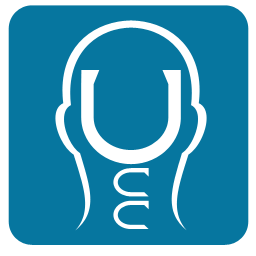In the Journal of Upper Cervical Chiropractic Research, a study was published on May 9, 2013, documenting a positive change in Heart Rate Variability (HRV) as well as a variety of other symptoms in a series of three different patients. HRV is used to measure the variation in beats of the heart. Since this is controlled by the nervous system, HRV is a good indicator of nerve system function.
The authors of this study relate the measurement of HRV to vertebral subluxation of the spine. The authors postulate that since subluxations cause interference to nerve system function, the effects of subluxations should be noted in HRV readings. In addition to the HRV, bilateral heat readings along the spine were used to establish a "pattern" by which to measure change or improvement.
In this study, three separate patients were documented while under (upper cervical) chiropractic care. The first case was of a 35-year-old male truck driver with right shoulder and neck pain that radiated into the right arm and forearm. He also had numbness in his right hand. He had been suffering with these problems for 10 years. A chiropractic examination revealed an upper neck subluxation, and a course of specific correction was initiated.
The second case was of a 67-year-old woman who was diagnosed with hypertension one year earlier. The patient stated that medication was ineffective. Her blood pressure at the time of the examination was 156/100. Her chiropractic examination also revealed subluxation in the upper neck and specific care for correction of her subluxation was initiated.
The third patient was a 42-year-old woman suffering with constant pain from between the shoulders down to her hips. She was also suffering from fatigue, loss of sleep, nervousness, difficult digestion, and constipation. A chiropractic examination also revealed the presence of subluxations for which specific adjustments were given.
In all three of these cases HRV was used to monitor the effects of the subluxation correction. Bilateral heat readings were also used to establish a heat pattern for each patient. In all three of these cases the HRV and the heat readings improved along with significant improvement in the symptoms that each of the patients experienced.
In their conclusion the researchers noted, "In these three cases, there appears to be a relationship between the improvements in bilateral skin temperature pattern analysis and heart rate variability following an upper cervical chiropractic technique. It is feasible that upper cervical chiropractic care can have a positive effect on the autonomic nerve system and there may be a connection between pattern reduction and improved heart rate variability."
(Editor's note: Remember the objective of upper cervical care is to correct head neck misalignment that is interfering with proper brain to body communication. When this is corrected the body functions at a higher level and can often correct other problems more efficiently on its own. Please do not confuse upper cervical care as a treatment for any condition, disease or symptom.)
skip to main |
skip to sidebar
Upper Cervical Care: Healthcare that begins by getting our head on straight.
Upper Cervical Links
- Upper Cervical Care...Learn More
- General info for patients by a patient
- What Time Tuesday: A Patient's Story
- The Power of Upper Cervical Movie
- Upper Cervical Advocates
- Upper Cervical Awareness Website
- An Upper Cervical Doctor's Blog
- Journal of Upper Cervical Care Research
- Upper Cervical Research Foundation




